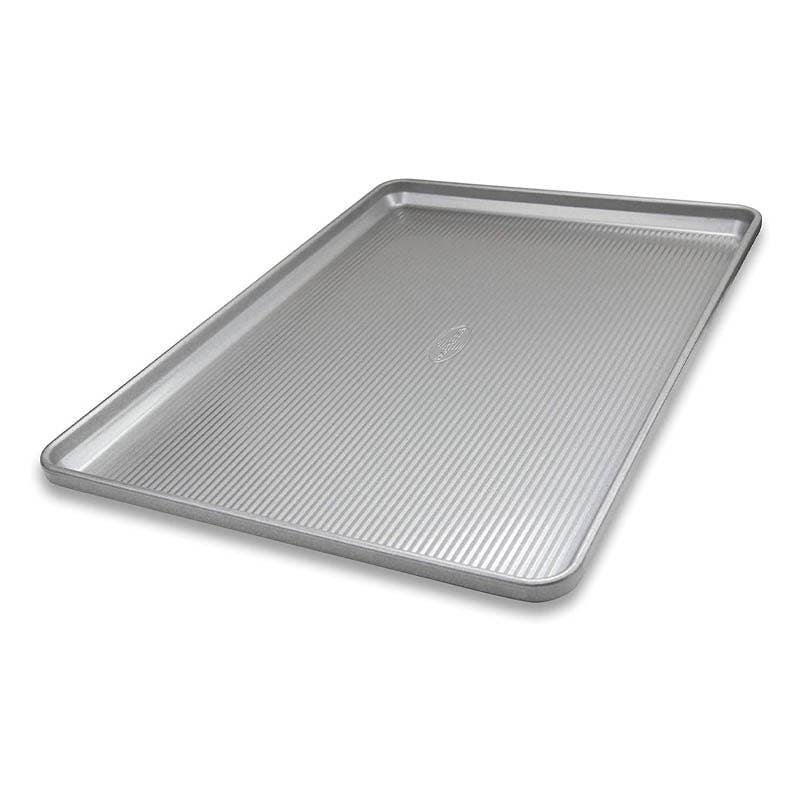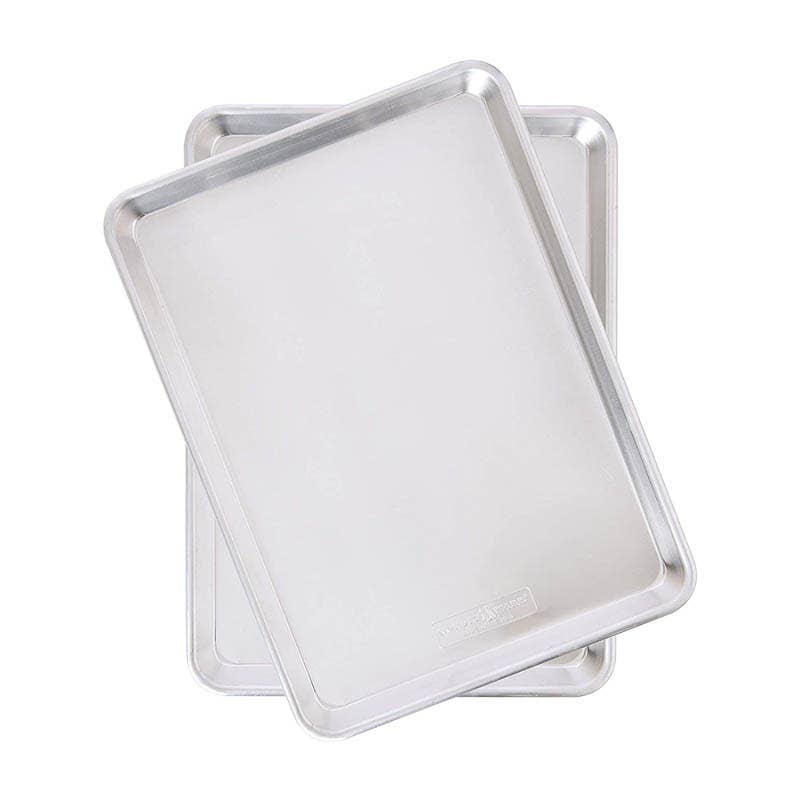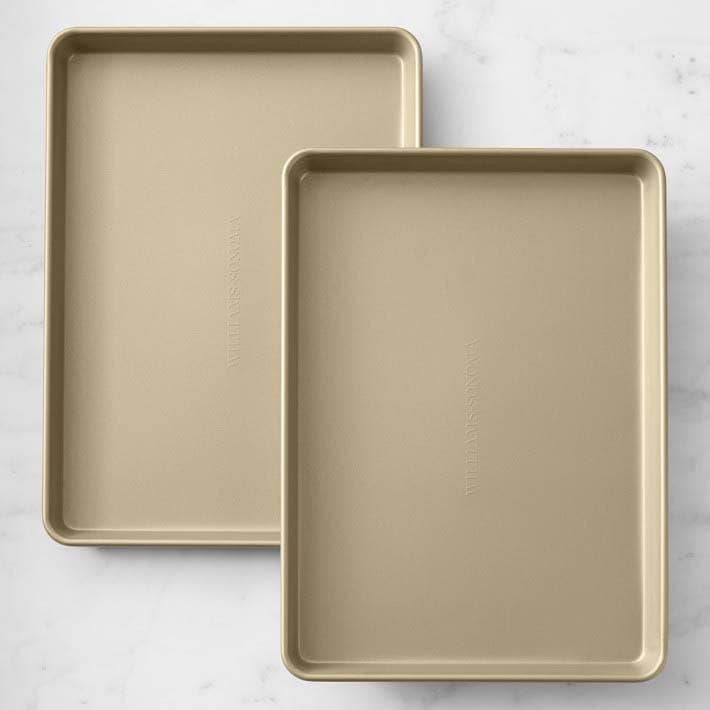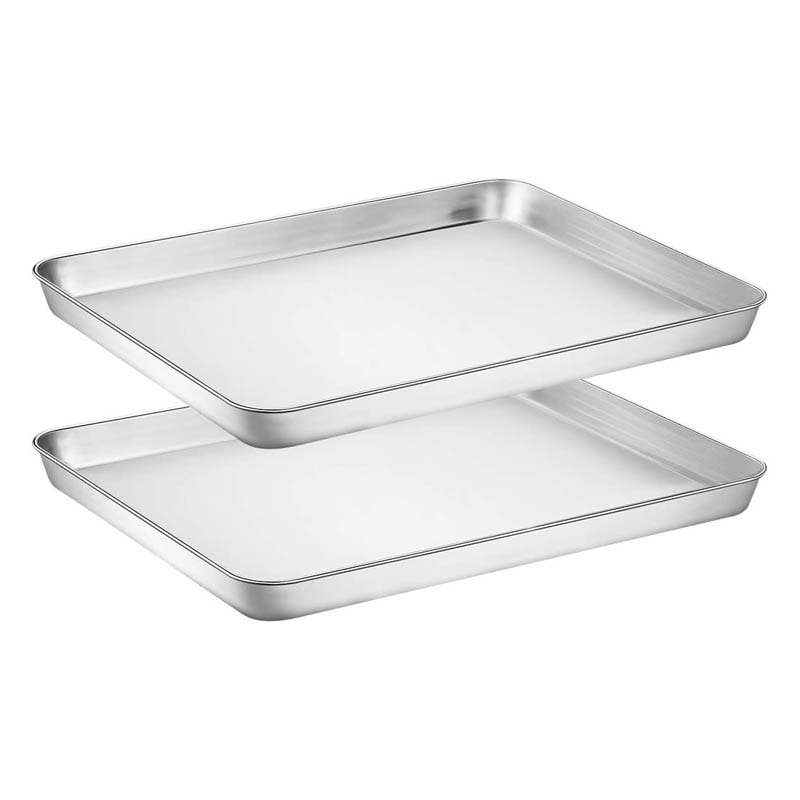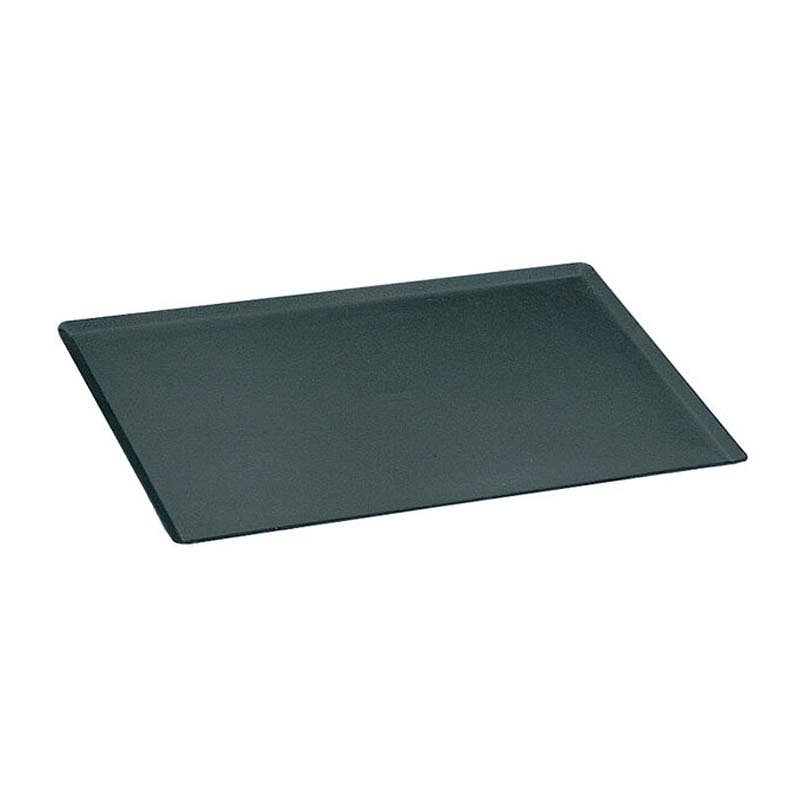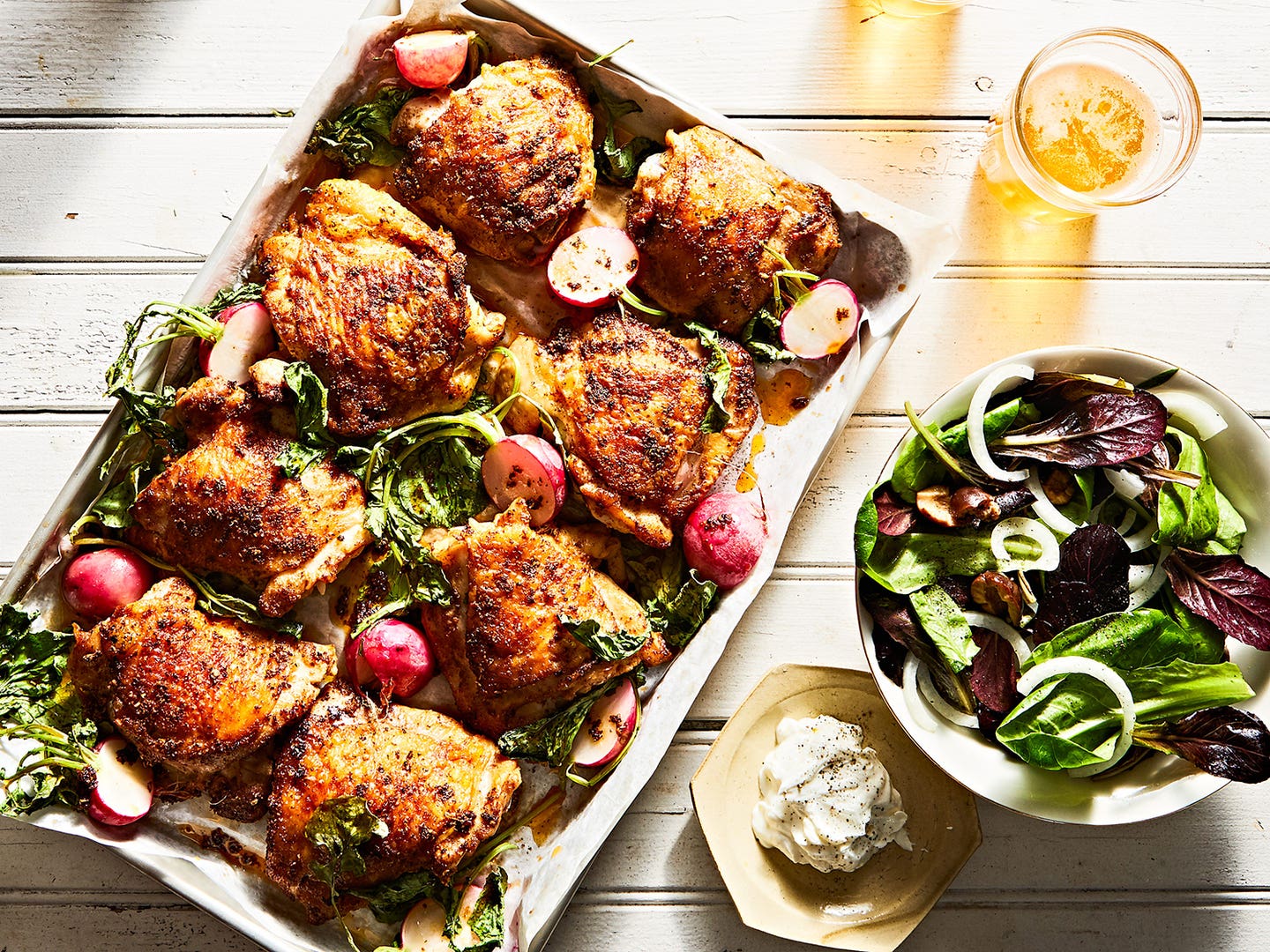
The Best Baking Sheets Are More Than Just a Backdrop for Your Next Recipe
From reliable no-frills workhorses to fancier options that double as serveware, we’ve got you covered.
Whether you’re a novice or seasoned cook, baking sheets are a reliable workhorse in the kitchen. Simple as they are, there’s a certain alchemy that happens when food hits their metal surface, arguably making these humble kitchen staples the most important tool in your arsenal. To help us on our quest to find a perfectly weighted, holy-grail sheet, we tapped Tyler O’Laskey of Perenn Bakery in Reno, Nevada, and Rita-Ashley Cunningham of Cupcakes by Ritaa in Atlanta for their recommendations. Whether you’re on the hunt for a no-frills workhorse to help you perfect tomorrow’s sheet-pan dinner or a stylish matte-gold option that deserves to be on display, we’ve found the best baking sheets to level up your next recipe.
- Best Overall: USA Pan Heavy Duty Nonstick Baking Pan
- Best Value: Nordic Ware Natural Aluminum Commercial Baker’s Half Sheet
- Best Splurge: Williams Sonoma Goldtouch Pro Nonstick Sheet Pan
- Best Stainless Steel: Wildone Stainless Steel Sheet Set
- Best Design: Matfer Bourgeat Tapered Edge Blue Carbon Sheet Pan
Features to Keep in Mind
Material
According to O’Laskey, you can’t go wrong with bare aluminum if you’re on a budget and cooking in large quantities. “At our bakery, we use 18-gauge or heavier aluminum baking sheets lined with parchment,” he says. It’s less expensive than aluminized steel (which is made by dipping steel in an aluminium-silicon alloy) or tri-ply construction (aluminum sandwiched between stainless steel) and distributes heat evenly. That said, O’Laskey recommends splurging if you want one that’ll last for years. “For baking at home, I use a nicer quality aluminized steel pan,” he says. “They will last a lifetime, so they are worth the slightly higher investment.” Stainless steel is a good option for anyone who prefers to avoid aluminum altogether. Plus, stainless steel retains heat well and helps ensure that food cooks evenly.
Size
When it comes to sizing, a full sheet measures 26 x 18 inches with sides about one inch high. A half sheet is—you guessed it—precisely half the size of a full sheet at 18 x 13 inches. A quarter sheet and an eighth sheet go down in size accordingly, and a jelly roll pan is between a half sheet and a quarter sheet. Which sheet is best for you, of course, depends on what you’re baking and the size of your oven, so pay close attention to what the recipe calls for and check the oven rack dimensions before buying.
Gauge
A heavier gauge is also important, but it comes down to budget. “The heavier the gauge, the more expensive, and the heavier the pan, the better the pan conducts heat and the more even your baking will be,” O'Laskey explains.
Our Top Picks
Best Overall: USA Pan Heavy Duty Nonstick Baking Pan
O’Laskey’s mom gave him a hand-me-down USA Pan when he moved to college—and it’s going strong more than a decade later. “My wife and I still use it several times a week at home,” he says. “It looks and bakes the exact same as it did when my mom gave it to me.” That’s because the commercial grade aluminized steel sheet is reinforced to prevent warping and covered in a patented nonstick, BPA-free silicone coating, ensuring even cooking and high-performance baking.
Best Value: Nordic Ware Commercial Baker’s Half Sheet
A less expensive but solid alternative to pricier options, Nordic Ware’s rustproof aluminum sheet is a fan favorite for bakers of all experience levels with nearly 20,000 reviews and an unwavering 5-star rating on Amazon. “The finish might fade and not look as shiny after a few uses, but silicone mats or parchment paper fixes all that and cuts down on messes at the same time,” O’Laskey says. To keep it looking like new, avoid using it to cook acidic foods like vinegar and tomatoes.
Best Splurge: Williams Sonoma Goldtouch Pro Sheet Pan
If you’re looking for a more elevated design, this nonstick option from Williams Sonoma will do the trick. With its matte-gold finish and signature heft (fair warning: some reviewers complained about the weight), this commercial-grade aluminized steel sheet is bound to become a family heirloom if cared for properly. “It’s beautifully designed and long-lasting—low maintenance!” O’Laskey says.
Best Stainless: Wildone Stainless Steel Sheet Set
For those concerned about aluminum possibly leaching into food, try going the stainless steel route. This one is a reliable must-have for its sleek finish, sturdiness, and rust-free surface. Rita-Ashley Cunningham of Cupcakes by Ritaa prefers this pan because it’s easy to clean and is available in five sizes (choose from a mini 9-inch to an extra large 18-inch option). A word of warning, though: some buyers mention that the base can warp over time, so make sure you distribute food evenly across the surface and heat it slowly to prevent the metal from buckling.
Best Design: Matfer Bourgeat Blue Carbon Sheet Pan
“This is the cast iron pan of sheet trays,” says O’Laskey, who recommends this design for anyone who “nerds out” over quality cookware and takes care of their tools “like a significant other.” It’s also a great option for anyone who’s completely opposed to aluminum. When properly cared for, it develops a “seasoned” nonstick coat over time, like cast iron, that won’t wear off like other nonstick coatings. Plus, the sleek blue design makes it a sheet pan you’d be proud to serve straight from the oven.
Ask the Experts
What’s the difference between a baking sheet and a cookie sheet?
It all comes down to the rim. Cookie sheets have one raised edge to allow baked goods to slide off onto the cooling rack or plate with ease, whereas baking sheets have four raised edges that are each about one inch tall. It’s a matter of personal preference: “I prefer the security of the rimmed sheets [because] there’s less chance of dropping pastries,” O’Laskey says.
How do I clean my baking sheet?
No need to overcomplicate it—a general purpose Scotch-Brite pad and soapy water will do. Let it soak for 2-3 hours if the grime is especially bad.
What’s the best way to prolong the life of a baking sheet?
Follow O’Laskey’s golden rule and always line your sheet to keep it in pristine condition. “I don’t really know anyone professionally that doesn’t use some type of barrier between the food and the cooking tray,” he says, noting that either a silicone mat or parchment paper will do the trick. “Soak a silicone mat after baking [and] it will shorten the cleaning up by a ton.”
Keep Reading
Continue to Next Story
